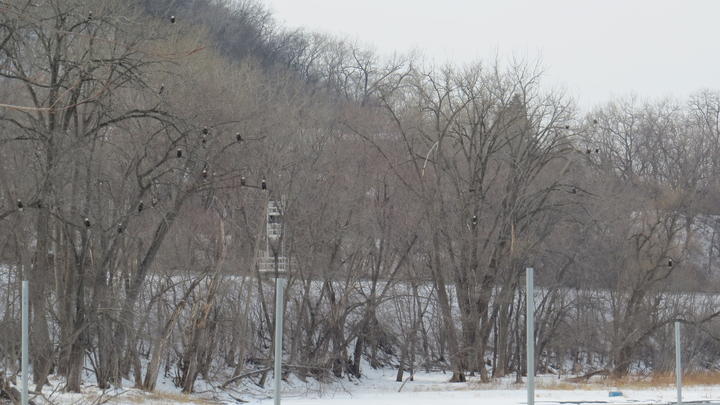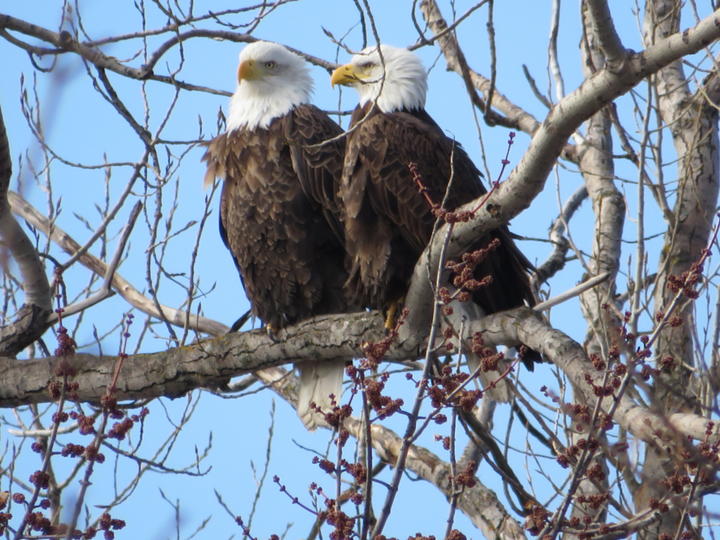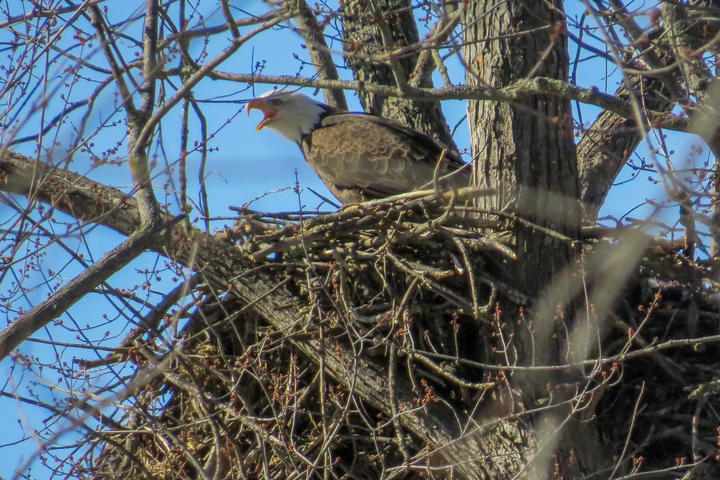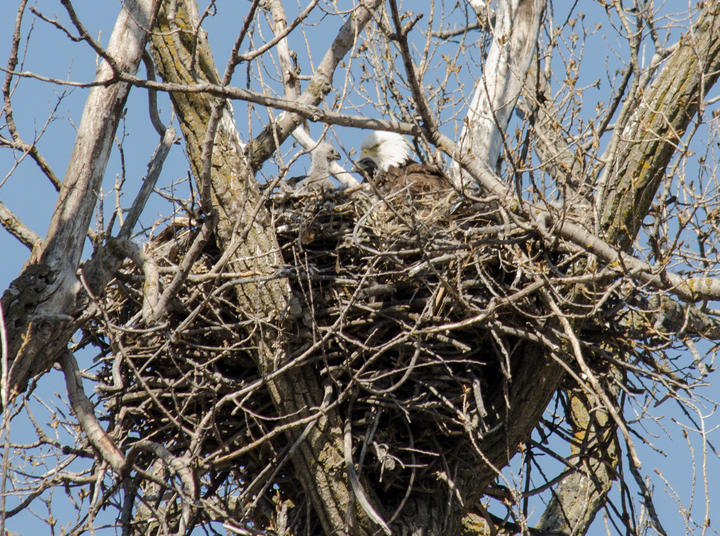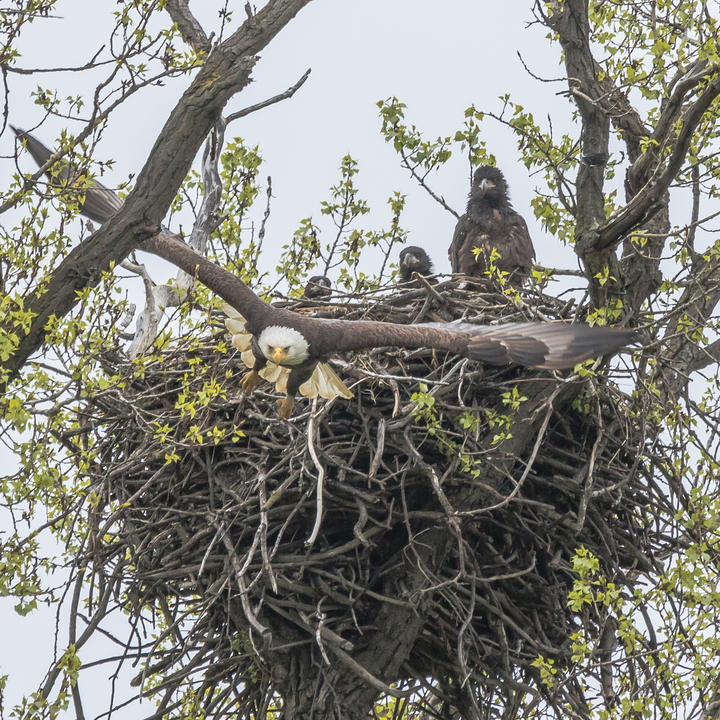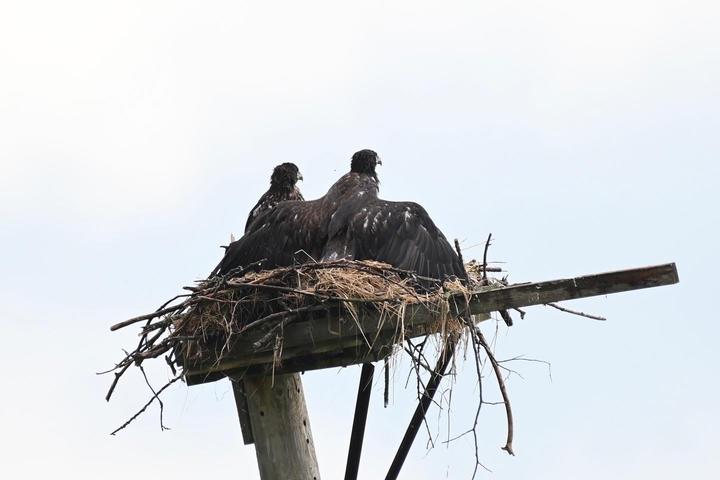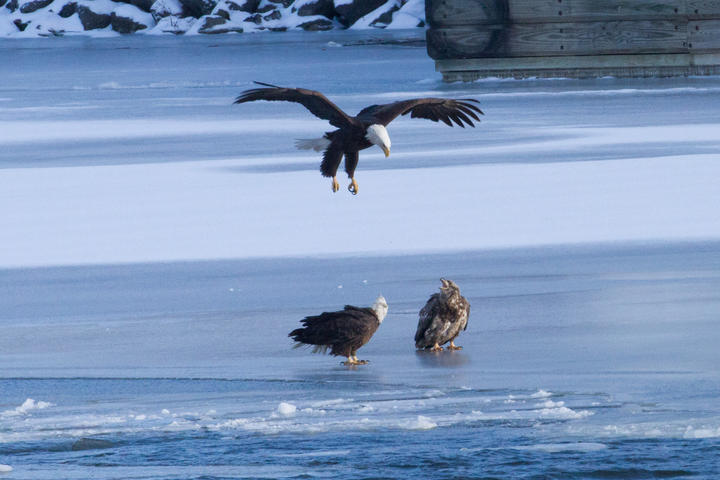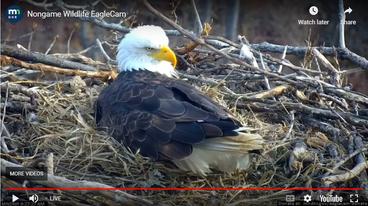More names for this bird
Anishinaabemowin: Migizi
Dakota: Waŋbdi (eagle) or Anuŋkasaŋ (bald eagle)
The Dakota and Anishinaabe were among the earliest people to name Minnesota’s plants and animals, as well as to understand them in relation to Minnesota’s climate and seasons. Those original names are still in use, and several are included on the Season Watch website.
Latin (or scientific name): Haliaeetus leucocephalus
The scientific community has a convention of assigning agreed-upon Latin names to every kind of organism. Using scientific names helps people communicate confidently about the same organism and organize lifeforms based on how closely related they are.
Page contents
About the bald eagle
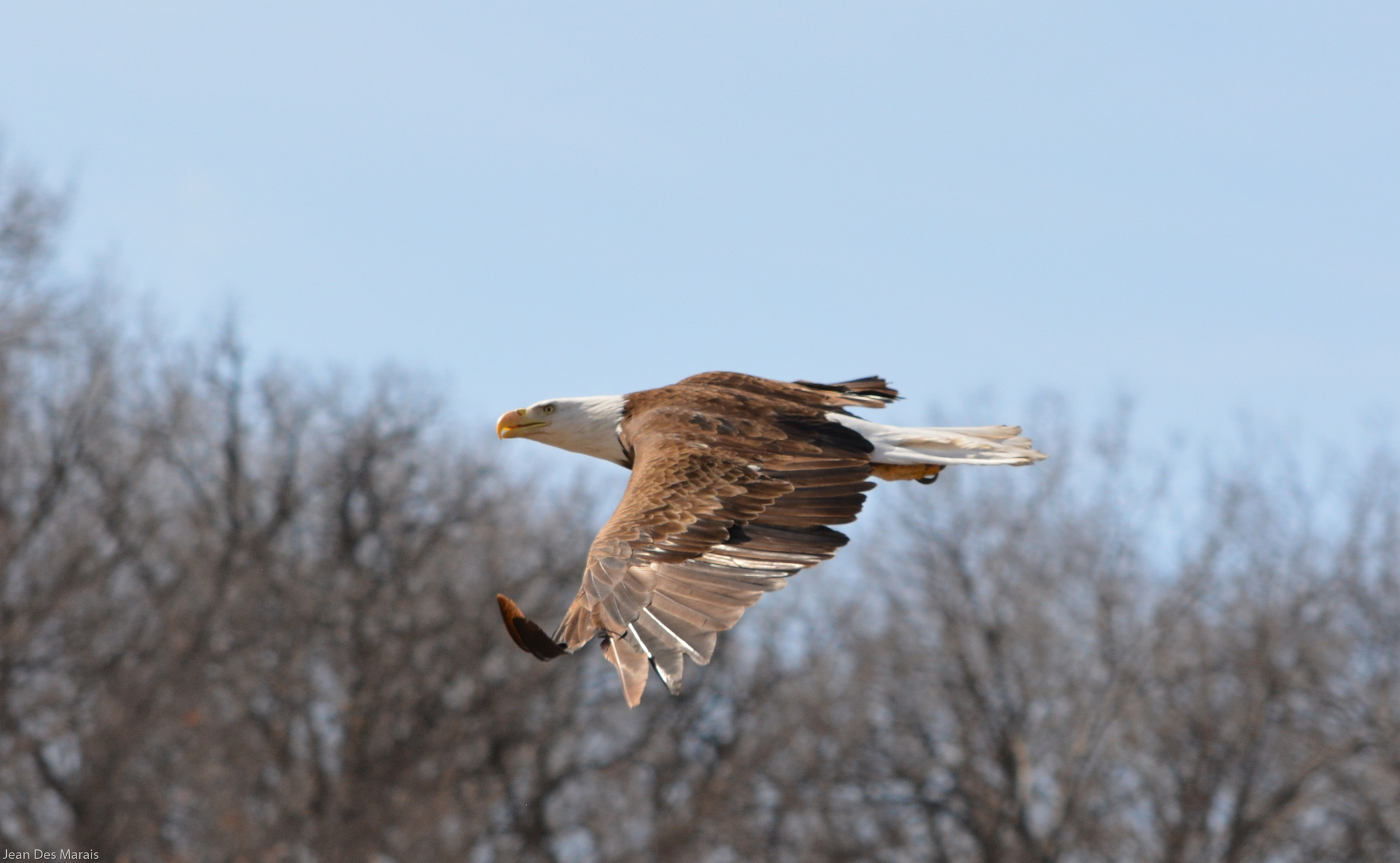
March 18, 2022, Dakota County, Minnesota
Photo © jldm, some rights reserved (CC-BY-NC)
iNaturalist observation
About the bald eagle
- An adult bald eagle is a raptor larger than a goose. It is dark brown with a white head and tail and yellow bill and legs.
- Bald eagles mostly eat fish but will eat a variety of food depending upon availability. Some alternative foods include reptiles, birds, rabbits and muskrats.
- Bald eagles commonly nest in forested areas next to large bodies of water.
- Fun fact: Feast or fast! Bald eagles sometimes gorge, ingesting a large amount of food and digesting it over several days. They can also survive fasting for many days, even weeks.
- Bald eagles migrate. Expand the "Migration animation" section below to learn more.
Migration animation
Migration animation
Click the full-frame icon (lower right corner of video) to play at full size.
More about eBird's abundance animations
eBird data from 2006-2020. Estimated for 2020. Fink, D., T. Auer, A. Johnston, M. Strimas-Mackey, O. Robinson, S. Ligocki, W. Hochachka, L. Jaromczyk, C. Wood, I. Davies, M. Iliff, L. Seitz. 2021. eBird Status and Trends, Data Version: 2020; Released: 2021. Cornell Lab of Ornithology, Ithaca, New York. https://doi.org/10.2173/ebirdst.2020
Visual guide to phenology
Watch for bald eagles' presence (or absence), abundance, and behaviors at different times of year. Also, pay attention to when young-of-year hatch, fledge and develop.
Note to observers
This page explains general clues to watch for when observing bald eagle phenology. However, this page does not explain how to identify this bird or collect data in a standardized way.
- For help with identification, see The Cornell Lab's All About Birds.
- For guidance on collecting data, see Nature’s Notebook.
Graphs and historical data
Note: The Orientation Center provides a map, as well as information on reading graphs; interpreting summary statistics, who collected the data and how; and how to download datasets for independent exploration.
First young
- Earliest: June 11 (occurred in 2010)
- Average: July 12
- Latest: August 8 (occurred in 2012)
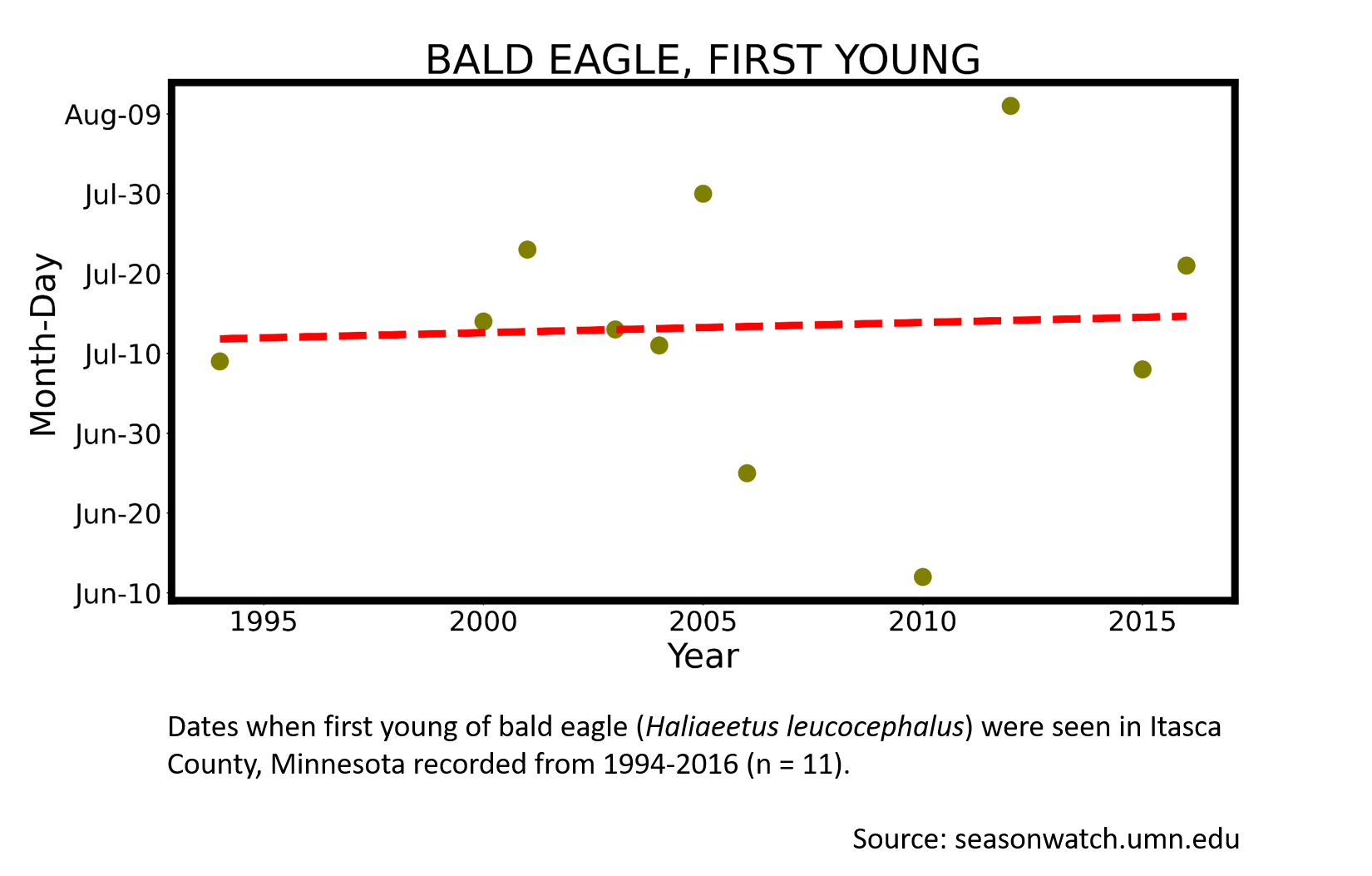
More resources
Keep exploring Season Watch
Keep exploring Season Watch
Co-author: Jayme Hogan, Minnesota Master Naturalist
